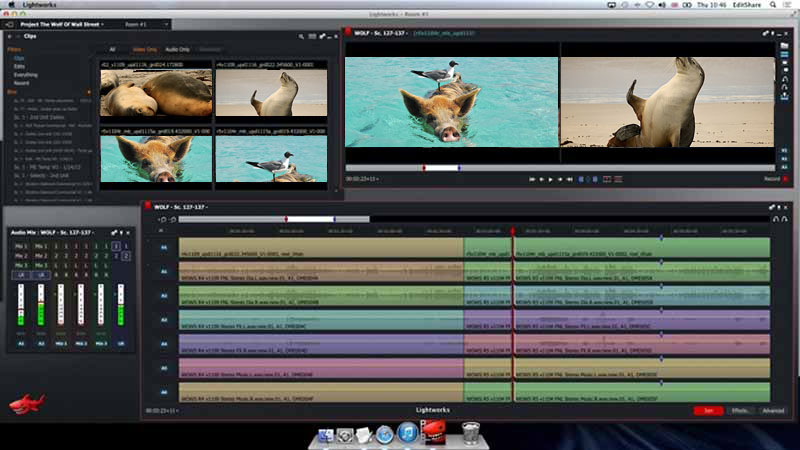

Anyone can correct me if I'm wrong (a video tutorial would be awesome) but when a change is made that throws things out of sync, you have to unjoin the cuts in such a way that allows the clip to be moved the number of frames that it's out of sync.Īttached are 4 pictures to illustrate the following example. Clicking on the red button does not automatically throw your clips back into sync. I mean what the hell is a ‘subclip’ when the result is a partial edit containing sometimes many shots and many audio tracks?Ĭlick to expand.This took a while for me as well and maybe I still don't comprehend it fully.

Though I must say that LW have confused the issue with the ‘subclip’ terminology in the copy edit menu rather than ‘copy all’ or ‘copy part’ wording.

All the usual caveats apply – the viewer has to be in record and the track has to be selected (I think). Make sure the timeline cursor is within the clip select Fix Sync from the timeline menu – and it does. The basic is – open whichever track of the clip you want to move when re-syncing - either audio or video. To see these you have to have ‘show original sync loss’ enabled in the timeline menu.

It also shows the out of sync indicators on the timeline – the ones I meant. The attached picture is a nonsense edit showing what I mean. The ‘elite athletes’ of the editing world have trained themselves through years of experience to know their edit second by second LW allows them to do their reverse one and a half somersaults with three and a half twists edits with relative ease. The other point I was making is that the uncontrollable automated computerised madness that is ‘rippling’ is very seldom what an editor really wants/needs to do and very often requires serious damage repair to an edit. It’s not always as straight forward as – at the same place as the picture and sync audio changes. The editor has to select at which point in the edit they want, whatever change they’ve decided is best for that track, to take place. The point I was trying to make is that with LW complex trimming is easy and can be executed simultaneously wherever you like in your edit and if you wish with different results at each point you decide to open a video or audio track.Īll you need to be able to do is ‘visualise’ what you want/need to do – so that if you’re sliding the video to close the gap what do you intend for your audio tracks say sync dialogue, sync effects, BG non-sync effects, atmos tracks, music tracks. Use that part copy as your source and insert to your heart’s content. If you want to insert multiple instances of a section of edit - mark and park the section - make a copy of that part - takes about a millisecond. LW editors routinely use complex non in-line editing - once they are confident with visualising exactly how they want each track on their edit to move, In your simple example you could chose to close the gap by moving the incoming audio or by extending it at the head or extending it at the tail – it’s all in the way you choose to open your cut point, and that choice can be individual for each audio or video track and can be made at multiple and any point in your edit. Remember that LW will display any out of sync contrition of tracks that have an established sync relationship - like video with associated audio tracks - if need be you can bring those back into sync with the LW timeline fix sync commands. In your example you could simultaneously close the same gaps on both sides of your marker or indeed anywhere in your edit. In your example you would simply open the cut points in all of your tracks as you need to achieve your required result, and remember you can open more than one point on any track, you would then execute your action by single console or keyboard input, by nudging frame at a atime or by playing and it is all done in one step. LW is THE superior tool for advanced, non in-line editing.


 0 kommentar(er)
0 kommentar(er)
